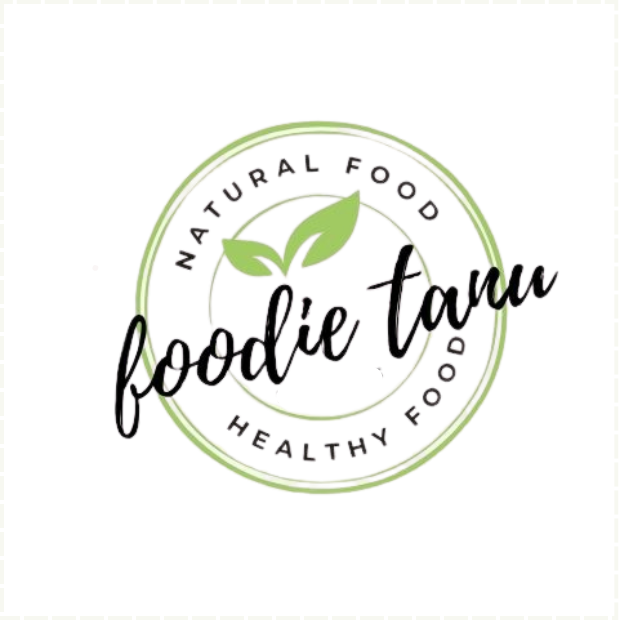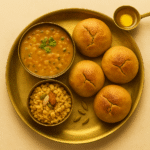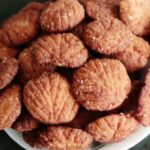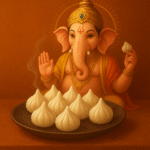The Best Fluffy Pancakes recipe you will fall in love with. Full of tips and tricks to help you make the best pancakes.
Introduction: Rasgulla
Rasgulla is a milk-based sweet. Rasgulla is made by curdling milk, draining the whey, and kneading the milk solids to make balls. Rasgulla is made in just 4 steps. If there’s one sweet that rules the hearts of millions across India, it’s the rasgulla. Soft, spongy balls of chenna soaked in light sugar syrup. Rasgulla is a true celebration of Indian culinary art. Whether you’re a beginner or a seasoned home chef, this detailed rasgulla recipe will help you make perfect rasgulla every single time.
In this guide, we’ll walk you through every step of the rasgulla-making process—from curdling the milk to achieving that iconic bounce in every bite. Let’s bring this delightful sweet to your kitchen!
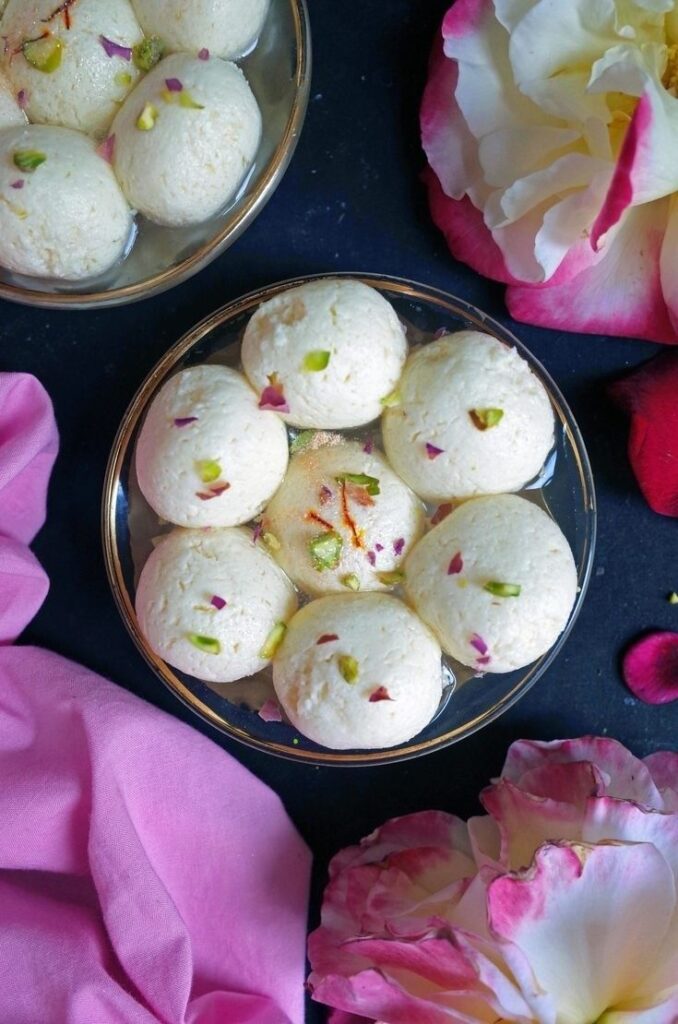
What Is Rasgulla?
Rasgulla, also spelled Roshogolla in Bengali, is a traditional Indian sweet. Rasgulla is made from chenna (curdled milk solids), shaped into balls, and boiled in light sugar syrup. Originating in West Bengal, rasgulla is now loved across India and even worldwide.
The beauty of rasgulla lies in its:
- Soft texture
- Spongy bounce
- Sweet, juicy flavour
Making rasgulla at home may seem daunting, but with the right tips, it’s simpler than you think!
A Sweet Journey: The History of Rasgulla
Rasgulla, also known as Roshogolla in Bengali, is one of India’s most beloved desserts — soft, spongy balls of chenna (cottage cheese) soaked in light sugar syrup. But did you know rasgulla has sparked debates between Odisha and West Bengal for decades?
Origins of rasgulla – Odisha or Bengal?
The earliest references to a rasgulla-like sweet appear in the temple traditions of Puri, Odisha, where it is believed to have been offered as bhog to Lord Jagannath since the 12th century. Rasgulla was called Khira Mohana, and it later evolved into what we now know as rasgulla.
However, West Bengal popularized the sweet rasgulla in the 19th century, thanks to Nobin Chandra Das, a Kolkata-based confectioner. He is credited with creating the modern spongy version of rasgulla by experimenting with chenna and pressure-cooked sugar syrup.
The GI Tag Dispute
In recent years, the “rasgulla war” between Odisha and Bengal led to both states seeking Geographical Indication (GI) tags. In 2017, Bengal received the GI tag for “Banglar Rasgulla.” Later in 2019, Odisha too received a GI tag for “Odisha Rasgulla” — giving both versions recognition and pride.
A Global Sweet
Today, rasgulla is enjoyed across India and the world, not just as a dessert, but as a symbol of cultural pride, heritage, and tradition.
Ingredients for Rasgulla
Here’s what you’ll need for around 12–14 medium-sized rasgulla:
For Chenna (Cottage Cheese):
- Full-fat milk – 1 liter
- Lemon juice or vinegar – 2 tablespoons
- Water – 1/4 cup
For Sugar Syrup:
- Sugar – 1.5 cups
- Water – 4 cups
- Cardamom pods – 3 to 4 (optional)
- Rose water or kewra water – 1/2 teaspoon (optional)
Step-by-Step Rasgulla Recipe
Step 1: Preparing Chenna
- Boil the milk in a heavy-bottomed pan.
- Once it comes to a boil, reduce the heat and add lemon juice or vinegar gradually, stirring gently.
- The milk will curdle. Once the whey separates completely, turn off the heat.
- Pour it over a muslin cloth and rinse under cold water to remove the acidic taste.
- Tie the cloth and hang it for 30–45 minutes to drain excess water. The resulting chenna should be moist but not watery.
Step 2: Kneading the Chenna
- Spread and Knead:
Transfer the chenna to a plate and knead it with the heel of your palm for 10 minutes. This step is crucial—it gives rasgulla their signature smoothness and bounce. - Check Texture:
The chenna should feel smooth, non-grainy, and a bit greasy when ready. - Make Balls:
Divide into 12–14 equal portions. Roll each into a smooth ball with no cracks.
Step 3: Making Sugar Syrup for rasgulla
- Boil the Water and Sugar:
In a wide, deep pan, combine sugar and water. Bring to a boil until the sugar dissolves completely. - Add Flavor:
Toss in cardamom pods or a few drops of rose water for added aroma (optional but recommended).
Step 4: Cooking the Rasgulla
- Boil the Balls:
Gently add the rasgulla balls into the boiling syrup. Cover with a lid and cook for 15–18 minutes on high heat. - Watch Them Puff Up:
The balls will double in size as they cook. Resist the urge to open the lid frequently. - Cool Down:
Once done, turn off the heat and allow the rasgullas to cool in the syrup.
Pro Tips for Perfect Rasgulla
- Use fresh full-cream milk: Toned or skimmed milk won’t yield soft chenna.
- Kneading is key: Under-kneading makes them grainy, while over-kneading can make them hard.
- Don’t overcrowd the pan: Rasgullas need room to expand.
- Cook on high heat: This helps them puff properly.
- Use wide vessels: A broad pan ensures even cooking.
Serving Suggestions for Rasgulla
Rasgulla can be served:
- Chilled or at room temperature
- As is or with a touch of rose water
- Alongside meals on festive occasions
They’re also a fantastic base for fusion desserts like:
- Rasgulla Tiramisu
- Rasgulla Parfait
- Baked Rasgulla
Storage Tips
- Store rasgullas in their syrup in an airtight container.
- Refrigerate and consume within 3–4 days.
- Avoid freezing, as it ruins the texture.
Variations of Rasgulla
- Rajbhog – Stuffed and often flavored with saffron.
- Kesar Rasgulla – Infused with saffron strands for a golden hue.
- Chocolate Rasgulla – Modern twist with a chocolatey center or syrup.
Each variation brings a different charm to this classic sweet!
Final Thoughts
Making rasgulla at home is not just about creating a dessert— rasgulla is about connecting with tradition, family, and that special joy only Indian sweets can bring. This rasgulla recipe has been tested and perfected to help you succeed in your very first try.
So go ahead—bring that Bengali sweetness to your kitchen and let your guests be amazed by your homemade rasgullas!
FAQs
Q: Why did my rasgullas turn hard?
A: Overcooked syrup, not enough kneading, or dry chenna can cause hardness.
Q: Can I use store-bought paneer?
A: No, rasgulla requires fresh, soft chenna—not firm paneer.
Q: My rasgullas broke in syrup. Why?
A: Cracks in balls, under-kneading, or overcrowding the pot could be the reason.
